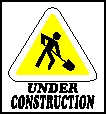Westfield House, Swyre Rd., Puncknowle,
Dorchester ,
Dorset DT2 9BP
Tel. 01308 897734 Fax. 01308 897734 Internet. http://www.acrogen.com
ACROGEN EDUCATIONAL AND TECHNICAL INFORMATION
SUMMARY
Acrogen is
dedicated to the design and manufacture of Variable Mains Alternating Current
switch mode power supplies and controllers. They are called VMACs
for convenience.
There are
three ways of controlling mains power. These are burst control, phase control
and wave control. These three approaches are discussed more fully below.
Until now,
only the first two ways, burst control and phase control, were easy to do using
mechanical contacts, thyristors or triacs. The use of a VMAC now allows the third control
technique, wave control, to be easily implemented.
Wave control
has positive advantages with current and impending legislation though at
present it is relatively expensive. However, for certain types of loads, VMAC
units and the use of wave control offer an effective solution. They also open
up new control opportunities that were either impossible or very difficult to
do.
It is Acrogens'
view that VMAC type units allied to wave control will become the dominant
energy control technology in the long term, especially as the cost of
semiconductors becomes relatively cheaper and the adoption of ever more
stringent legislation makes the other technologies more and more expensive to
bring into line.
BURST CONTROL
This is the
usual technique adopted where mains is used to operate something like a
resistive heater. The power is switched on and off
repeatedly, say, every 15 to 30 seconds. The ration of 'on' to 'off'
dictates the average power supplied to the load. Simple circuitry is involved
and it is relatively cheap to implement.
The main
objection, which is getting quite serious, is impending 'flicker' legislation.
The electricity suppliers also do not like this kind of load switching as it
can cause difficulties in providing a 'within tolerance' voltage supply.
PHASE CONTROL
This is the
technique normally used to vary the mains when controlling a load like a light
bulb. The power is switched on, (or off), at some point every half cycle. The
percentage of the half cycle that is 'on' dictates the amount of power supplied
to the load. More complicated circuitry is required with a medium cost burden.
The main
objection, perhaps even more serious than above, is the appalling power factor
that is imparted by the load current, especially at half power setting. The
current utilities are not going to accept this for much longer, especially if a
viable alternative comes along.
WAVE CONTROL
This technique
may be used to control virtually any type of load. The power applied by the
VMAC type unit is the same waveshape as the incoming
mains (sinusoidal) but just at a reduced amplitude
(voltage). It is the most complicated circuitry and the highest cost. However,
it provides the perfect answer to flicker legislation and power factor
legislation. The power drawn from the mains and supplied to the load is smooth
and progressive.
In fact, wave
control already is used in a very crude way by either variable resistors (rheostats) where up to one quarter of the full
output power is lost in the resistance. It is also done using variable auto
transformers which give quite reasonable efficiencies but are difficult and
slow to control, plus they are prone to brush wear problems and track damage
when left at one setting for long periods of time. Finally, 'linear amplifier'
power supply units will provide good wave control but with the penalties of
very poor efficiencies and exceptionally high cost.
CONVERSION STRATEGIES
VMACs can perform wave control in two different
ways. Each method has certain advantages.
DIRECT CONVERSION
The A.C. mains is converted directly to the desired value by
switching transistors in a circuit similar to part of a switch mode power
supply. Because of its direct conversion, the overall efficiency is in the
region of 97-98%. The neutral connection is maintained between input and
output. Input and output frequency has to be the same and the input and output
voltage phase angle is the same as well. However, due to its 4 quadrant
operation, the current can flow in either direction.
INDIRECT CONVERSION
In this
arrangement, the A.C. mains is converted to D.C. via
an isolating transformer and then the D.C. is converted to A.C. again. The
advantage of this approach is that the output frequency as well as the
amplitude can be varied. The output can also be isolated and floating with
respect to the input. The disadvantages of indirect conversion are lower
efficiency, 85-90% at best, and also much higher circuit costs.
PROBLEM LOADS
The following
problems occur with burst and phase control. Wave control implemented by a VMAC
unit offers effective control and overcomes or eliminates them all.

